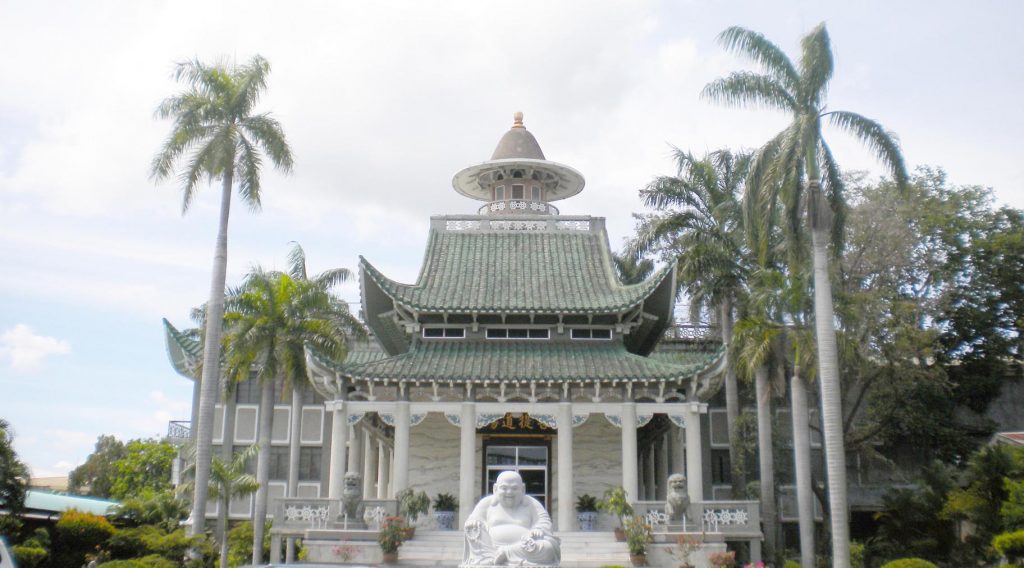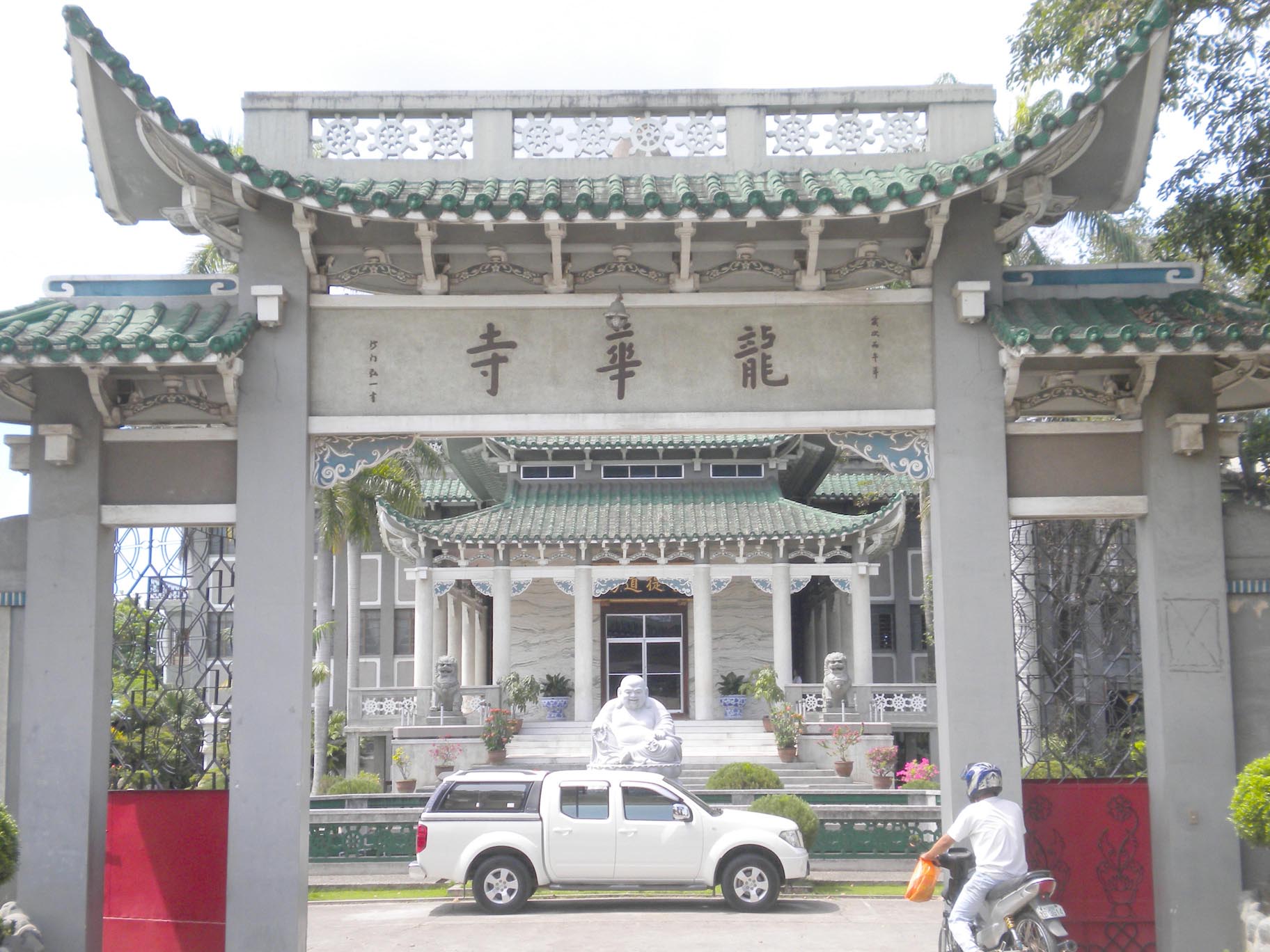Editors Note: This is the 34th of a series about the 36 Chinese Buddhist temples of the Philippines. Much of the information is from a thesis of Venerable Chuanmiao (Hsuan Chuang University, 2008), a Buddhist monk affiliated with the Thousand Buddha Temple in Quezon City.
34. Long Hua Temple 龍華寺
Cobaguio Avenue, Davao City | Tel. (082) 2217992
The temple was founded by Ven. Guangfan (廣範) in 1966, although the building was completed and inaugurated only in 1968. Guangfan, a native of Quanzhou, was a disciple of Ruijin (瑞今) and was ordained at Mount Putuo in 1947, aged 21. He underwent Buddhist education in Hangzhou and Hong Kong, and arrived in Manila in 1958 to help Ruijin at Seng Guan Temple.
On a visit to Davao in 1965, the enthusiasm of local lay Buddhists convinced him to start a temple there. The temple was named Longhua (龍華), recalling the story of Maitreya, the Buddha of the future, attaining buddhahood under the longhua tree.
In 1978, Guangfan founded the Davao branch of the Philippine Academy of Sakya, with the Chinese name Longhua School (龍華學校), but the school began operations only in 1994.
On a visit to Seng Guan Temple in 2001, Guangfan met Nengzhen (能振), then 36, who was visiting with a group of monastics from Guanghua Temple (廣化寺) in Putian, Fujian.
Nengzhen, a Putian native, had been educated and ordained there. Guangfan invited Nengzhen to visit Davao, and eventually asked him to take over as abbot. He accepted and assumed the abbotship in 2002. In 2005, he founded the temple’s charity clinic.
Guangfan also founded the Leifeng Vihara (雷峰精舍) in California in 1988, and died there in 2004. His ashes were brought to Davao and interred at the temple.

Main buildings. The temple’s main entrance leads to a circular driveway, with a pond adorned in the center by a concrete statue of Maitreya. The steps lead up to the second-floor Bodhi Hall, where Shakyamuni Buddha is enshrined with his two attendants. The statues are of white Italian marble and the use of wood panels for walls is unique to this temple.
The Great Compassion Hall of Guanyin is behind the main hall, and the small ancestral hall is on the ground floor. The worship halls form a vertical line, and the living quarters, office, and refectory are aligned horizontally, giving the cluster of buildings a T-shape.
The school is located behind the temple but has its own access road.
Leadership and primary activities. Nengzhen is still the abbot, assisted by another monk and two nuns. There is a weekly Sunday morning service, and chanting services are held on the first and 15th of the month, and all Buddhist feast days. Every few years, a grand chanting service is organized with the help of monastics from outside Davao.
An example of a grand chanting service is the one that uses the Emperor Liang Repentance Ceremony (梁皇寶懺).
The charity clinic holds medical missions in different areas three times a year. A scholarship fund was also established in memory of Guangfan in 2006. — — First published in Tulay Fortnightly, Chinese-Filipino Digest 26, no. 4 (July 23-Aug. 5, 2013): 12-13.
